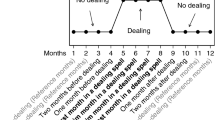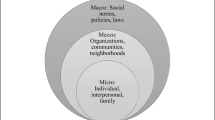Abstract
Background
Access to firearms among delinquent youths poses significant risks to community safety. The purpose of the study was to describe how a group of criminally involved youths obtained guns.
Methods
Youths were randomly selected from a juvenile justice facility to participate in a semistructured, anonymous interview. Transcripts were coded and analyzed with the aid of textual analysis software.
Results
Of the 45 participants, 30 had acquired at least 1 gun prior to their most recent incarceration, and 22 had acquired multiple guns. About half of the first gun acquisitions were gifts or finds. The first guns youths acquired were usually obtained from friends or family. The most recent acquisitions were often new, high-calbier guns, and they came from acquaintances or drug addicts. New guns often came from igh-volume traffickers. Gun acquisitions from strangers or through “straw purchases” were rare. Though few obrtained guns directly throug theft, some youths believed their supplier bad stolen guns. Youths rarely left their community to obtain a gun.
Conclusions
Guns were readily available to this sample of criminally involved youths through their social networks. Efforts to curtail high-volume, illegal gun traffickers and to recover discarded guns from areas in which illicit drug sales take place could potentially reduce gun availability to high-risk youth.
Similar content being viewed by others
References
Krug EG, Powell KE, Dahlberg LL. Firearm-related deaths in the United States and 35 other high- and upper-middle-income countries. Int J Epidemiol. 1998;27:214–221.
Bureau of Justice Statistics. Homicide Trends in the US: Age, Gender, and Race Trends. Washington, DC: US Dept of Justice; 2000. Available at: www.ojp.usdoj.gov/bjs/homicide/ageracesex.htm. Accessed July, 1, 2001.
Bureau of Justice Statistics. Homicide Trends in the US: Weapons Used. Washington, DC: US Dept of Justice; 2000. Available at: www.ojp.usdoj.gov/bjs/homicide/weapage.txt. Accessed July 1, 2001.
Zimring FE, Hawkins G. Crime Is Not the Problem. London:Oxford University Press; 1997.
Brewer ND, Simon TR, Krug EG, Lowry R. Recent trends in violence-related behaviors among high school students in the United States. JAMA. 1999;282:440–446.
Sheley JF, Wright JD. In the Line of Fire: Youth, Guns, and Violence in Urban America. New York: Aldine de Gruyter; 1995.
Ash P, Kellermann AL, Fuqua-Whitley D, Johnson A. Gun acquisition and use by juvenile offenders. JAMA. 1996;275:1754–1758.
Calahan CM, Rivara FP, Farrow JA. Youths in detention and handguns. J Adolesc Health. 1993;14:350–355.
Smith D. Sources of firearm acquisition among a sample of inner-city youths: research results and policy implications. J Criminal Justice. 1996;24:361–367.
Kennedy DM, Piehl AM, Braga AA. Youth violence in Boston: gun markets, serious youth offenders, and a use-renduction strategy. Law Contemp Probl. 1996;59:147–196.
Office of Juvenile Justice and Delinquency Prevention. Promising Strategies to Reduce Gun Violence. Washington DC: US Dept of Justice; 1999.
Freed LR, Webster DW, Longwell JJ, Carrese J, Wilson MH. Factors preventing gun acquisition and carrying among incarcerated adolescent males. Arch Pediatr Adolesc Med. 2001;155:335–341.
Qualitative Solutions and Research Pty., Ltd. QSR NUD * IST. Thousand Oaks, CA: Sage; 1997.
Lizotte AJ, KrohnMD, Howell JC, Tobin K, Howard GJ. Factors influencing gun carrying among young urban males over the adolescent-young adult life course. Criminology. 2000;38:811–834.
Blumstien A. Youth violence, guns, and the illicit-drug industry. J Criminal Law Criminol. 1995;86:10–36.
Bureau of Alcohol, Tobacco, and Firearms. The Youth Crime Gun Interdiction Initiative: Crime Gun Trace Analysis Reports: The Illegal Youth Firearms Markets in 27 Communities. Washington, DC: US Dept of the Treasury; February 1999.
Webster DW, Vernick JS, Hepburn LM. Relationship between licensing, registration, and other gun sales laws and the source state of crime guns. Injury Prev. 2001;7:184–189.
Cook PJ, Molliconi S, Cole TB. Regulating gun markers. J Criminal Law Criminol. 1995;86:59–92.
Author information
Authors and Affiliations
Corresponding author
Rights and permissions
About this article
Cite this article
Webster, D.W., Freed, L.H., Frattaroli, S. et al. How delinquent youths acquire guns: Initial versus most recent gun acquisitions. J Urban Health 79, 60–69 (2002). https://doi.org/10.1093/jurban/79.1.60
Published:
Issue Date:
DOI: https://doi.org/10.1093/jurban/79.1.60




